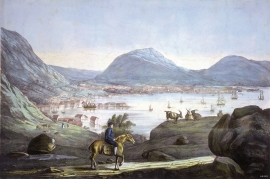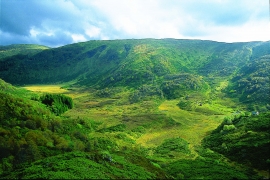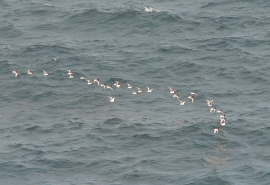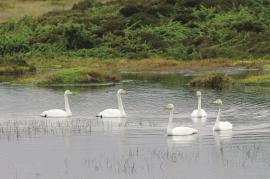- Remove Øygarden, frå 2020 del av nye Øygarden kommune. filter Øygarden, frå 2020 del av nye Øygarden kommune.
- Remove Basement rocks filter Basement rocks
- Remove Conservation area filter Conservation area
- Remove Bergen filter Bergen
- Remove Road constructions filter Road constructions
- Remove Fedje filter Fedje
- Remove Sedimentary rocks filter Sedimentary rocks
- Remove Seabirds filter Seabirds

Byparken
It isn't true that hungry students have hunted down basking ducks in the city park Byparken in their spring fervour, as rumours may have it. But, it is not unusual to see students throw themselves over the park's wild birds, and hold on to them tight. They ring the birds. Because of this, we know quite a lot about the birds in Byparken.



Reppadalen
The unusual bog landscape, with enormous peat deposits surrounded by steep mountainsides, makes Reppadalen in Arna an exciting, but little visited tour destination for most of Bergen's inhabitants. Those who live in Arna, however, know to make the most of its beautiful natural splendour.

Skogsøyna
There isn't much forest on Skogsøyna today, but that there is, has been planted. There is not much wildlife, either. But, quite a lot of birds pass by Skogsøyna during migration time. Ther is no other place along the coast where you can better observe the seabird migrations.

Tjeldstømarka
There is no place in Hordaland where there are so many over-wintering song swans as in Tjeldstømarka. And there are few places in the county that have had this birdfowl as a guest for as long.

Fedje bog
The wild rabbit is really native to Northwest Africa, but the Ancient Romans introduced them to large parts of Europe. Not to Norway, rightly enough: the population on Fedje originated from 3-4 pairs that were brought here from the Shetland Isles in 1875, making this their first residence in the country.

Holmengrå
Holmengrå is the only place in Hordaland where we find traces of the abrasion that is supposed to have transformed Western Norway from a Himalaya-like high mountain landscape during the earth's Paleozoic Era, to a flat lowlands terrain during the Mezosoic Era. Just 400 million years ago, large and small stones plummeted down from the high mountains. Some of these stones became incorporated into the conglomerate bedrock on Holmengrå.


Sandviksfjellet
On Sandviksfjellet there are old boulders that have been made into mountains. The stones have been stretched out or squeezed together between huge slabs of rock, during slow, but powerfulprocesses of transport. This conglomerate shows, in quite a special way, the enormous powers that were active during the collision between Norway and Greenland over 400 million years ago.


